History of Five Rivers MetroParks
Influential People in the History of MetroParks
There are many influential people who have been a part of making Five Rivers MetroParks what it is today.
From the attendees of the “Green Spaces” meeting in 1962, to former park directors, to staff and volunteers still making an impact today, we’ve compiled information to highlight many of these important citizens below. Throughout history, Five Rivers MetroParks has been shaped by residents who sought to protect these green spaces and share them with their community. These “hidden” heroes might not have super powers, but they have super passion for nature. Be a part of MetroParks history; share your passion for nature as a volunteer.
Marie Aull
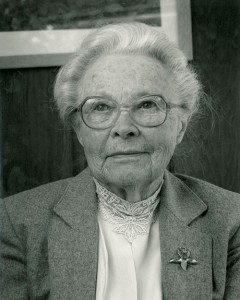 To many, Marie Aull was the godmother of the environmental movement in southwestern Ohio. Marie Aull was a founding member of the Garden Club of Dayton and the area’s beloved environmentalist and naturalist. As both a conservationist and gardener, she loved Dayton and its natural beauty, and devoted her life to preserving it. She founded Aullwood Audubon Cener and Farm and gave it to the community in 1957. The center became the model for nature centers nationally.
To many, Marie Aull was the godmother of the environmental movement in southwestern Ohio. Marie Aull was a founding member of the Garden Club of Dayton and the area’s beloved environmentalist and naturalist. As both a conservationist and gardener, she loved Dayton and its natural beauty, and devoted her life to preserving it. She founded Aullwood Audubon Cener and Farm and gave it to the community in 1957. The center became the model for nature centers nationally.
Marie, one of the founders of the Dayton Garden Club in 1922, in conjunction with other members donated $50,000 to assist the park district (MetroParks) in December 1964, prior to the first levy, for the acquisition of some of the district’s first park lands at what are now Possum Creek, Sugarcreek and Carriage Hill MetroParks. She was also one of the founders of Cox Arboretum.
In 1977, Marie Aull conveyed her home and 30-acre garden to the park district (MetroParks). She continued living in her home, which overlooks the Stillwater River, while keeping her garden open to the public. She passed away in 2002, at the age of 105.
Rebecca Benna
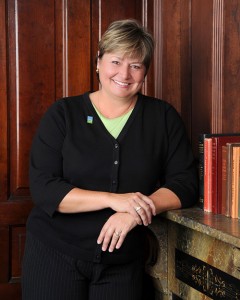 In March, 2011, The Board of Park Commissioners appointed Rebecca A. “Becky” Benná as MetroParks new Chief Executive Officer. Becky brought an outstanding balance of relevant experience, education, managerial expertise, and team-building skills to the organization.
In March, 2011, The Board of Park Commissioners appointed Rebecca A. “Becky” Benná as MetroParks new Chief Executive Officer. Becky brought an outstanding balance of relevant experience, education, managerial expertise, and team-building skills to the organization.
She retired from Five Rivers MetroParks in April 2023.
Irvin G. Bieser, Jr.
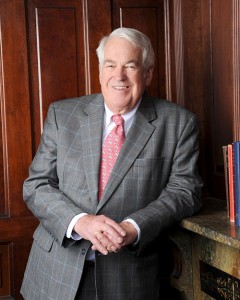 Irvin G. Bieser, Jr. was appointed to the Board of Park Commissioners in 1998.
Irvin G. Bieser, Jr. was appointed to the Board of Park Commissioners in 1998.
Of the projects the MetroParks has completed during Bieser’s time with the agency, he is particularly enthusiastic about prairie restoration and projects that connect people with the rivers, such as RiverScape MetroPark and RiverScape River Run. Both projects also contribute to the revitalization of the downtown Dayton area, providing entertainment and recreation value to region. Bieser also sees Five Rivers MetroParks as an integral community wellness asset, especially for those in underserved communities.
“A strong parks system is making the whole community stronger, and the strength and reputation helps the whole region,” said Bieser, retired partner with the law firm Bieser Greer Attorneys at Law.
Bieser is known in the Dayton community for his tireless efforts on conservation initiatives. In addition to his involvement with the Five Rivers MetroParks board of commissioners, Bieser also leads an initiative to protect the land along the Little Miami River through the Upper River Fund and was involved in starting the Greater Dayton Conservation Fund. He has also served as president of the board of the Nature Conservatory of Ohio.
After nearly 20 years of service as a commissioner, he retired at the end of 2017.
Charles S. Bridge
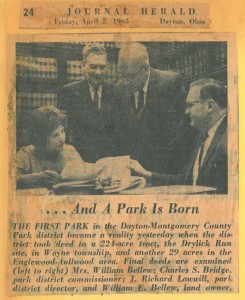 Charles S. Bridge, a local attorney who was deeply involved in community affairs, to succeeded Glenn Thompson as President of the Save Open Space Committee in the early 1960′s and drafted the petition to create a park district. He persuaded seventeen cities and townships in Montgomery County to sign, representing 83% of the county population.
Charles S. Bridge, a local attorney who was deeply involved in community affairs, to succeeded Glenn Thompson as President of the Save Open Space Committee in the early 1960′s and drafted the petition to create a park district. He persuaded seventeen cities and townships in Montgomery County to sign, representing 83% of the county population.
Thompson and Bridge presented the application and a hearing was held. Overwhelming support made it easy for Zimmers to approve the formation of the park district, which officially began on April 8, 1963.
Simon Burick
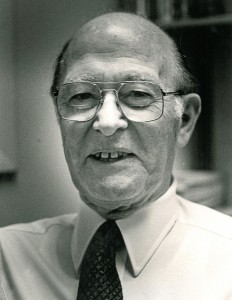 Dayton Daily News sportswriter Simon Burick succeeded Charles Bridge on the Board of Park Commissioners in 1970. Burick observed later that the park district (MetroParks) “was not my thing, but I was attracted to it.” Thus Burick the sportswriter became, somewhat to his surprise, Burick the conservationist. Shortly before his death in 1986, Burick recalled his delight in being appointed to the board, “I want to thank the park district (MetroParks) for asking me; and I want to thank myself for accepting.”
Dayton Daily News sportswriter Simon Burick succeeded Charles Bridge on the Board of Park Commissioners in 1970. Burick observed later that the park district (MetroParks) “was not my thing, but I was attracted to it.” Thus Burick the sportswriter became, somewhat to his surprise, Burick the conservationist. Shortly before his death in 1986, Burick recalled his delight in being appointed to the board, “I want to thank the park district (MetroParks) for asking me; and I want to thank myself for accepting.”
After successful levy campaign in 1984, Burick retired from the Board of Park Commissioners after serving 14 years.
Ruth Burke
Ruth Burke was a devoted gardener. She invested her energy and love for growing things in the residential lot around the home where she and her husband Logan lived on a shaded street in suburban Oakwood. Ruth’s standing among the nation’s gardeners was not limited to the Dayton area; in 1996 she received a Garden Clubs of America Lifetime Achievement Award.
Ruth and her husband Logan were close friends and golfing companions of Jim and Helen Cox. Ruth had enjoyed visiting Spring Running, now Cox Arboretum MetroPark when it was their weekend escape.
Ruth became close friends with Jean Woodhull and Jean Mahoney in the early 1960s and shared in their passion for creating an Arborteum on the grounds where Spring Running then stood. After Cox donated the land to their Arboretum project, she and the Jeans ran out and planted fifteen lilacs and fifteen crabapple trees as the first plants in teh Arb’s collection. The trip also recruited volunteers to help carry out parts of the master plan and sought donations – trees and shrubs, picks and shovels, fertilizer and mulch.
On February 27, 1964 the Arboretum Foundation Board voted to form a planning committee and asked Ruth Burke to be its chair. Burke remained a guiding figure for the Arboretum well into the 1970s and the Arbs transfer to the park district.
Vic Cassano, Sr.
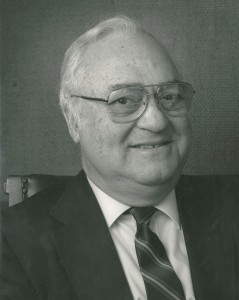 Vic Cassano was the Campaign Chairman for the first levy in 1964, and the subsequent campaign in 1965 after the first attempt failed. The theme for the successful May 1965 campaign was “Vote Green – It’s Now or Never.” The campaign was a primer for passing levies. Voters were canvassed, a speaker’s bureau was established, telephone banks were set up, politicians were approached for their support and church leaders were asked to speak out from their pulpits. When the votes were counted, the park district’s (MetroParks’) $0.3 million levy had passed with a 52% vote in favor.
Vic Cassano was the Campaign Chairman for the first levy in 1964, and the subsequent campaign in 1965 after the first attempt failed. The theme for the successful May 1965 campaign was “Vote Green – It’s Now or Never.” The campaign was a primer for passing levies. Voters were canvassed, a speaker’s bureau was established, telephone banks were set up, politicians were approached for their support and church leaders were asked to speak out from their pulpits. When the votes were counted, the park district’s (MetroParks’) $0.3 million levy had passed with a 52% vote in favor.
Vic Cassano was again campaign chairman in 1974. The park district (MetroParks) decided to go for a renewal of the existing levy ($0.3 million) with an addition of $0.2 million, the permissible limit at the time. The levy passed with a 62% vote. The funds for the park district (MetroParks) were now doubled.
Larry Christman
Larry Christman, a state representative from Englewood, was an important supporter establishing Sycamore State Park in 1979. The 2200-acre parcel in the failed Newfields development west of Trotwood became available in the late 1970′s, and was importance open space with the Wolf Creek running through it. However, it was too large for the park district to afford. Don Schmidt approached the State of Ohio to convert the parcel into a state park and Christman introduced a bill in the state legislature and got an appropriation of $4,000,000. Sycamore State Park was authorized and purchased. Through this addition, total open space acreage in the Dayton area thus came very close to the goal of 8500 acres established in 1965.
James Cox, Jr.
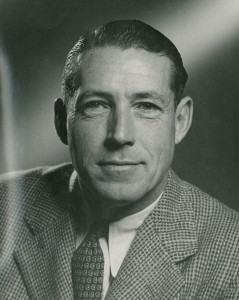 James Cox, Jr. donated his farm south of town for an arboretum in 1962. In addition to the donation, Cox also established a $300,000 trust fund to help support it. Cox Arboretum became part of the park district in December 1972.
James Cox, Jr. donated his farm south of town for an arboretum in 1962. In addition to the donation, Cox also established a $300,000 trust fund to help support it. Cox Arboretum became part of the park district in December 1972.
Over the years, the Cox Foundation created in his name, has continued to generously support the operation, maintenance and expansion of the Arborteum.
Dr. Dan Curran
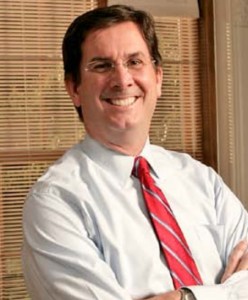
University of Dayton President Dr. Dan Curran chaired the successful 2009 levy campaign for the Five Rivers MetroParks. When asked about his participation, he said “Clearly, this community is passionate about our parks. I am honored to be part of the ongoing effort to keep MetroParks accessible, safe and clean for all of us to enjoy. The parks are also a living nature laboratory for the thousands of school children and university students living in Montgomery County. In our urban and suburban settings, the parks often provide the only opportunity children have to explore natural settings, see wildlife and enjoy outdoor recreation.”
In his tenure at UD, President Dan Curran implemented an annual River Summit to help talk up riverfront development and to publicize what’s happening from Hamilton to Troy, established a River Institute to bring its students to the river, and has connected the University to the Great Miami River by establishing a River Campus in the old NCR world headquarters. Of the Great Miami River, Curran says: “It’s such a resource — and we overlook it all the time.”
Karen L. Davis
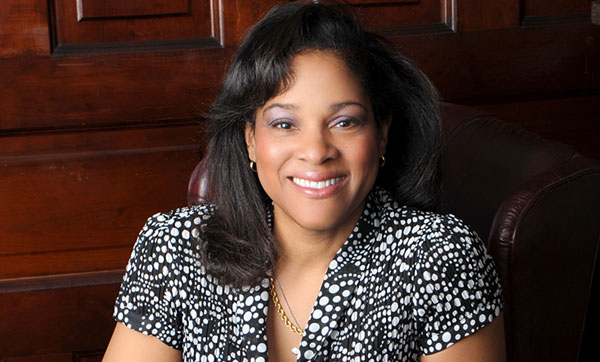 Karen L. Davis was appointed to the Board of Park Commissioners in 1996. Ms. Davis is a health care professional, community volunteer and family advocate.
Karen L. Davis was appointed to the Board of Park Commissioners in 1996. Ms. Davis is a health care professional, community volunteer and family advocate.
She continues to serve today.
Melvin Diehl
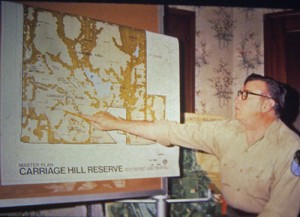 Melvin Diehl joined the park district (MetroParks) as assistant director in September 1969. Diehl took responsibility for writing grant applications and negotiating land acquisitions. He also designed investment programs for the park district (MetroParks), trust funds and other income. Diehl’s many years of experience in the business world before entering park work gave him an ideal background for these responsibilities.
Melvin Diehl joined the park district (MetroParks) as assistant director in September 1969. Diehl took responsibility for writing grant applications and negotiating land acquisitions. He also designed investment programs for the park district (MetroParks), trust funds and other income. Diehl’s many years of experience in the business world before entering park work gave him an ideal background for these responsibilities.
Harold R. Freiheit
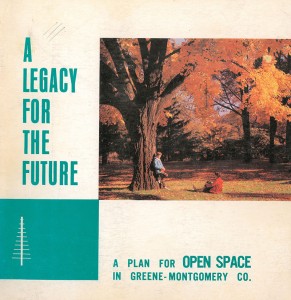 Harold R. Freiheit, a landscape architect and land planner, was hired by the Regional Transportation Committee’s newly formed Open Space Study Committee, to direct an open space study in 1959.
Harold R. Freiheit, a landscape architect and land planner, was hired by the Regional Transportation Committee’s newly formed Open Space Study Committee, to direct an open space study in 1959.
Results of the study were published under the title “A Legacy for the Future: A Plan for Open Space in Greene-Montgomery County.” It pointed out that, in a few years, at the current rate of growth, there would be little open space left in the Dayton Metropolitan area. Existing parks would not be adequate to meet the needs of the growing community.
Richard Gump
Richard Gump served as the treasurer for the Vote Green Finance Committee of the 1988 “Parks 2000″ Levy campaign, designed to promote and pass the levy. “Yes Parks” was adopted as the slogan of the campaign and the park district’s (MetroParks’) levy pledge was to continue providing clean, safe, well-managed parks with innovative programming and activities for all ages, and to pursue an aggressive land stewardship program. The $0.7 million, ten-year replacement levy, cancelled the then current $0.5 million levy.
He also served as treasurer for the 1994 and 1999 campaigns.
Karen Hesser
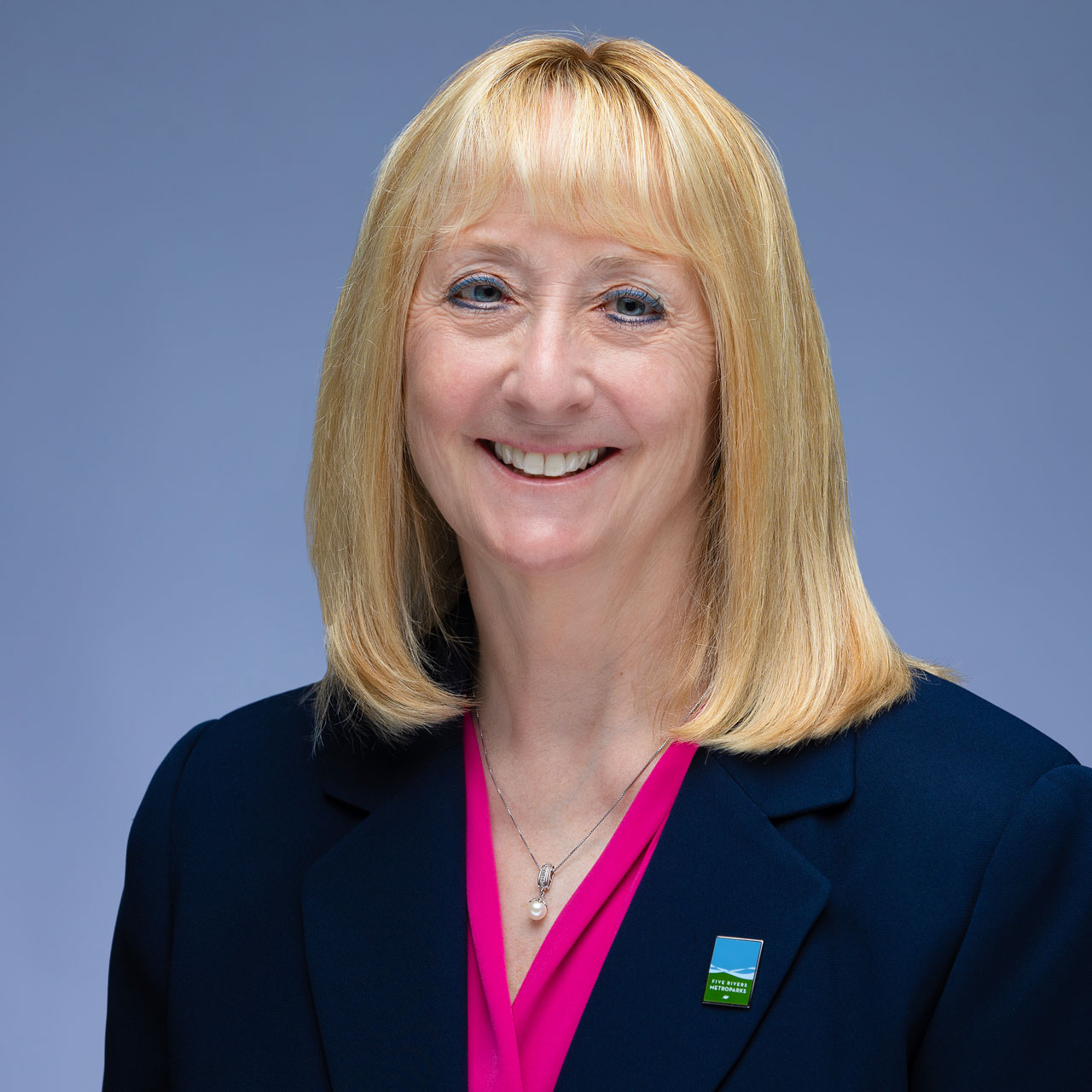 In April 2023, the Board of Park Commissioners appointed Karen L. Hesser as MetroParks new Chief Executive Officer. Karen has years of experience in the parks and recreation industry, including leadership roles in Arizona and Pennsylvania. She served as Five Rivers MetroParks director of park services and legislative affairs for four years before being promoted to chief of operations in 2016.
In April 2023, the Board of Park Commissioners appointed Karen L. Hesser as MetroParks new Chief Executive Officer. Karen has years of experience in the parks and recreation industry, including leadership roles in Arizona and Pennsylvania. She served as Five Rivers MetroParks director of park services and legislative affairs for four years before being promoted to chief of operations in 2016.
Horace M. Huffman
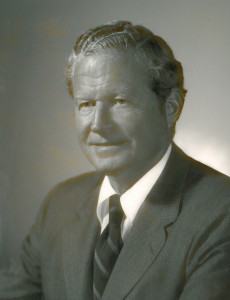 Horace M. Huffman was the president of the Cox Arboretum Trustees in 1972 when the James M. Cox Jr. Arboretum Foundation agreed to gift Cox Arbortetum to the park district.
Horace M. Huffman was the president of the Cox Arboretum Trustees in 1972 when the James M. Cox Jr. Arboretum Foundation agreed to gift Cox Arbortetum to the park district.
Huffman also served as honorary co-chairperson of the Vote Green Committee for the 1994 levy campaign. His son, Tony Huffman, served as campaign co-chairperson. The purpose of the levy was to provide additional funds that would be needed to implement a plan to protect and enhance the area’s major river corridors, while continuing to provide a high level of services at existing park sites. The “Vote Green” campaign centered on the vision of a “tapestry of greenways” in the Miami Valley utilizing river corridors and multi-use pathways to link parks, public facilities and communities.
With community support and the additional funding provided by the 1994 levy, on January 1, 1995, through agreements with the City of Dayton and Miami Conservancy District, the Park District (MetroParks) added Island Park, Van Cleve Park, Deeds Point, Wesleyan Nature Center, Sunrise Park, Wegerzyn Horticultural Center and river corridor areas to its facilities to provide daily management, programming and security.
Horace Huffman, former CEO of Huffy Corp. and the first chairman of the Chamber of Commerce’s River Corridor Committee, also pushed hard for the development of the bike trail along the Great Miami and Stillwater Rivers. The bikeway is named in his honor.
Tony Huffman
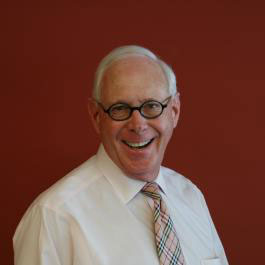 Tony Huffman, served as campaign co-chairperson of the Vote Green Committee for the 1994 levy campaign. His father, Horace M. Huffman, served as honorary co-chairperson. The purpose of the levy was to provide additional funds that would be needed to implement a plan to protect and enhance the area’s major river corridors, while continuing to provide a high level of services at existing park sites. The “Vote Green” campaign centered on the vision of a “tapestry of greenways” in the Miami Valley utilizing river corridors and multi-use pathways to link parks, public facilities and communities.
Tony Huffman, served as campaign co-chairperson of the Vote Green Committee for the 1994 levy campaign. His father, Horace M. Huffman, served as honorary co-chairperson. The purpose of the levy was to provide additional funds that would be needed to implement a plan to protect and enhance the area’s major river corridors, while continuing to provide a high level of services at existing park sites. The “Vote Green” campaign centered on the vision of a “tapestry of greenways” in the Miami Valley utilizing river corridors and multi-use pathways to link parks, public facilities and communities.
With community support and the additional funding provided by the 1994 levy, on January 1, 1995, through agreements with the City of Dayton and Miami Conservancy District, the Park District (MetroParks) added Island Park, Van Cleve Park, Deeds Point, Wesleyan Nature Center, Sunrise Park, Wegerzyn Horticultural Center and river corridor areas to its facilities to provide daily management, programming and security.
Scott Huston
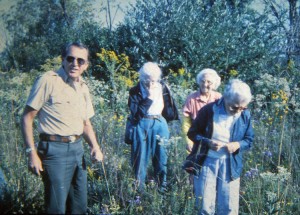 Hired by the district in September 1965. He left the Dayton Parks to respond to Lawwill’s call to “come along with me” because “great things are happening.” He began as assistant director, leading walks and “bushwhacking” trails in the parks. He, along with Scott and Lawwill, led walks on every weekend for two years.
Hired by the district in September 1965. He left the Dayton Parks to respond to Lawwill’s call to “come along with me” because “great things are happening.” He began as assistant director, leading walks and “bushwhacking” trails in the parks. He, along with Scott and Lawwill, led walks on every weekend for two years.
In May 1969, Huston left the park district (MetroParks) to work with a park district in Wisconsin.
Eugene Kettering
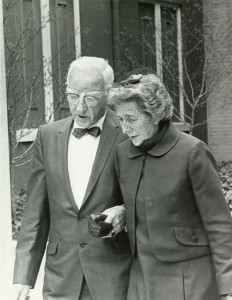 Eugene Kettering donated $250,000 to acquire the first park lands in 1964. Kettering stipulated that his contribution be used to purchase land “up north” because most of his philanthropy had been in the southern part of the county. This led to the acquisition of properties totaling 223 acres on April 1, 1965. This area was originally called Drylick Run and later became the north-central section of present Carriage Hill MetroPark.
Eugene Kettering donated $250,000 to acquire the first park lands in 1964. Kettering stipulated that his contribution be used to purchase land “up north” because most of his philanthropy had been in the southern part of the county. This led to the acquisition of properties totaling 223 acres on April 1, 1965. This area was originally called Drylick Run and later became the north-central section of present Carriage Hill MetroPark.
Paul Lacouture
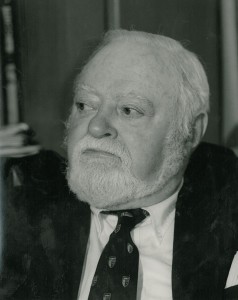 Paul Lacouture was part of the 1965 task force for buying land. He was an attorney with Smith and Schnacke, who handled the legal work.
Paul Lacouture was part of the 1965 task force for buying land. He was an attorney with Smith and Schnacke, who handled the legal work.
J. Richard Lawwill
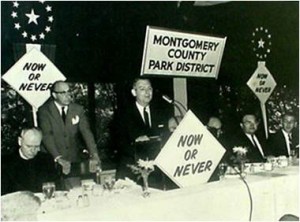 Lawwill, who had a Landscape Architect degree from the University of Cincinnati, was the first director-secretary of the park district – hired by the first Board of Park Commissioners. His background included working for the National Park Service during the Civilian Conservation Corps period. He had designed the master plans for Taylorsville, Englewood and Huffman. After two meetings with the park commissioners, Lawwill was hired and began his duties as director-secretary on May 2, 1964.
Lawwill, who had a Landscape Architect degree from the University of Cincinnati, was the first director-secretary of the park district – hired by the first Board of Park Commissioners. His background included working for the National Park Service during the Civilian Conservation Corps period. He had designed the master plans for Taylorsville, Englewood and Huffman. After two meetings with the park commissioners, Lawwill was hired and began his duties as director-secretary on May 2, 1964.
After the fundraising and successful levy passage of 1965, Lawwill established criteria for buying park land, as well as a master plan for park locations so the entire county would be served.
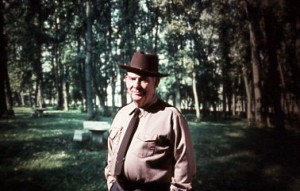 Lawwill went on to lead many efforts in establishing the park district. He retired in July 1976.
Lawwill went on to lead many efforts in establishing the park district. He retired in July 1976.
Jeff Leland
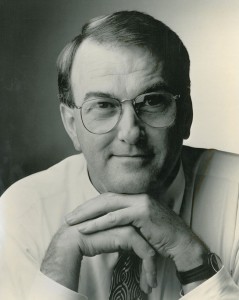 Jeff Leland, appointed by Judge George J. Gounaris, became a board of Park Commissioner in 1990. He was recruited by Harry S. Price Jr. as he laid groundwork for his own retirement. Leland is the grandson of the industrialist who built the two-story, Tudor-style house on Siebenthaler Ave., which was the park district’s main offices for 47 years.
Jeff Leland, appointed by Judge George J. Gounaris, became a board of Park Commissioner in 1990. He was recruited by Harry S. Price Jr. as he laid groundwork for his own retirement. Leland is the grandson of the industrialist who built the two-story, Tudor-style house on Siebenthaler Ave., which was the park district’s main offices for 47 years.
In 1991, Leland made the motion to keep the building and upgrade it rather than sell it and lease or build elsewhere. The brick, wood beam and stucco structure and a five-acre wooded hillside and ravine were donated by the Lelands to the Dayton Museum of Natural History. The museum had no use for it and couldn’t afford the upkeep, so it deeded the property to the park district for a nominal amount.
On March 29, 1996, Jeff Leland retired from the Board of Park Commissioners.
Jean Mahoney
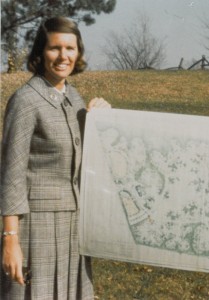
Jean was married to Dan Mahoney, son the the widower of Helen Cox, sister of James M Cox, Jr. Dan joined Jim Cox at the Dayton Daily News in 1950, and Jean became an enthusiastic member of the Garden Club of Dayton. When Jim Cox, who admired and trusted her, was considering the sale of farm south of town, Spring Running, for a housing development after Helen’s death, he called Jean and said, “I’d love to have you look at this plan and tell me what you think.”
Jean Mahoney was in the audience in the March 1962 meeting sponsored by the Garden Club of Dayton and the Four Seasons Garden Club when Felix Rimberg’s called for the preservation of green space. After the meeting, she, Marie Aull, Ruth Burke, and Jean Woodhull prepared to speak with one voice to tell James M. Cox, Jr. what they thought of his development plan with a park in the center. “There was no county park district to manage the land back then. Without care it could become an eyesore, a place where kids could hang out, get into trouble.”
Jean Mahoney relayed their concerns to Cox, who she recalls could be an impatient man. “Well,” he barked, “go figure something out.” Jean Mahoney had just returned from a visit to the Morris Arboretum, near Philadelphia. Inspired, she took a look at the nearby Dawes arboretum east of Columbus, learned of Cleveland’s planned green space “emerald necklace,” went to the library to collect publications about arboreta, and found a description. She prepared a thoughtful paper proposing establishment of an arboretum on the Cox property and identifying critical issues that would need to be considered. She made her request to Cox, who replied to her request with a short letter on Cox Enterprises stationery: “Congratulations. You got your Arboretum!”
On December 3, 1962, papers were filed with the Montgomery County Common Pleas Court transferring title to Spring Running to the James M. Cox, Jr. Arboretum. After the Arb was established, Jean worked diligently on master plans and pleaded for financial support from area garden clubs, well-heeled families, interested individuals, local corporations – wherever she thought she could tease loose a dollar or two. She worked to sign up some volunteers to broaden the Arboretum’s support base and community awareness.
She would remain involved as a member of the board until 1973, when she and her family left Dayton for Florida where her husband Dan would take charge of another Cox newspaper, the Palm Beach Post.
Ruth C. Mead
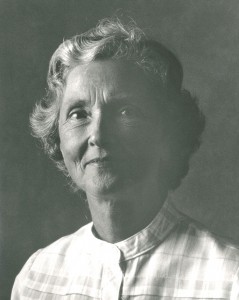 Mead was appointed to the Board of Park Commissioners in 1981. Her main knowledge of the park district (MetroParks) centered on Sugarcreek MetroPark where she and her children had spent many enjoyable hours. Mead considered herself a stalwart defender of the purposes of the park district (MetroParks). She described these as: preserve natural resources “forever wild”; provide opportunities for passive recreation (such as hiking, canoeing and bird watching); exercise land stewardship; and educate the public about the importance of open space and nature. Ruth was also active in the Garden Club of Dayton, an organization instrumental in the founding of the park district.
Mead was appointed to the Board of Park Commissioners in 1981. Her main knowledge of the park district (MetroParks) centered on Sugarcreek MetroPark where she and her children had spent many enjoyable hours. Mead considered herself a stalwart defender of the purposes of the park district (MetroParks). She described these as: preserve natural resources “forever wild”; provide opportunities for passive recreation (such as hiking, canoeing and bird watching); exercise land stewardship; and educate the public about the importance of open space and nature. Ruth was also active in the Garden Club of Dayton, an organization instrumental in the founding of the park district.
Ruth C. Mead retired from the Board of Park Commissioners on June 12, 1989.
Bear Monita
 Bear Monita replaced Alan Pippenger on the Board of Park Commissioners in April of 2019.
Bear Monita replaced Alan Pippenger on the Board of Park Commissioners in April of 2019.
Monita is a partner of LWC, the Dayton area’s oldest architectural, interior design and planning firm. He’s been with the firm for 21 years and is responsible for leading marketing, business development and client relations initiatives. He assisted Dayton Public Schools, the city of Kettering, Huber Heights City Schools, Dayton Metro Library and Wayne Local Schools in the successful passage of bond issue measures to construct new facilities totaling $1 billion.
Prior to joining LWC, Monita was the district director for U.S. Congressman Tony Hall and the government affairs manager of the Dayton Area Chamber of Commerce. He also serves on the boards of the Kettering Medical Center Foundation; Sinclair Foundation, including serving as board chair from 2017-2019; and the Ohio Foundation of Independent Colleges.
Arthur E. Morgan
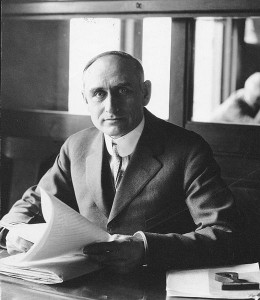 Within two months of the Great Flood of 1913, the citizens of Dayton raised more than two million dollars to plan and construct a flood control system. In 1914, the State of Ohio passed the Conservancy Act, which authorized stream drainage areas to form flood control agencies. On June 28, 1915, the Miami Conservancy District was created and headquartered in Dayton.
Within two months of the Great Flood of 1913, the citizens of Dayton raised more than two million dollars to plan and construct a flood control system. In 1914, the State of Ohio passed the Conservancy Act, which authorized stream drainage areas to form flood control agencies. On June 28, 1915, the Miami Conservancy District was created and headquartered in Dayton.
The Conservancy Board hired Arthur E. Morgan as chief engineer. His flood control solution consisted of five earthen retarding dams (four in Montgomery County), protecting levees and channel improvements. This system, completed in 1922, was unique but practical. Dayton and the Great Miami River Valley were protected from a repetition of the 1913 flood.
Morgan was not only an outstanding engineer, but a conservationist. Due in large part to his efforts, the impoundment areas above the dams and the stream flood plains were retained by the Miami Conservancy District and made available to the public for recreational pursuits.
Dane W. Mutter
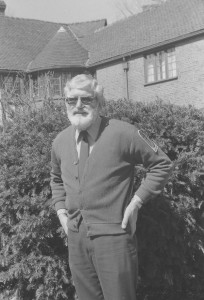 In 1967, Dane W. Mutter joined the park district (MetroParks) after working as a director of the Aullwood Audubon Center’s Children’s farm and as a local agricultural extension agent. There were few walking trails and only one naturalist on the payroll to interpret the areas. Mutter began planning additional hiking trails, developing education programs and designing land use management plans. With Dane’s background in agriculture, he was also instrumental in building the district’s farm education programs. He initiated a “Rural Life Center” at Possum Creek in 1968 celebrating the working farm of the 1880′s, including crops, livestock,and tools. In 1969 he also opened an outdoor education at the historic farm at Carriage Hill (then Drylick Run reserve). Dane grew with the park district through the late 1980′s, ultimately becoming the assistant director.
In 1967, Dane W. Mutter joined the park district (MetroParks) after working as a director of the Aullwood Audubon Center’s Children’s farm and as a local agricultural extension agent. There were few walking trails and only one naturalist on the payroll to interpret the areas. Mutter began planning additional hiking trails, developing education programs and designing land use management plans. With Dane’s background in agriculture, he was also instrumental in building the district’s farm education programs. He initiated a “Rural Life Center” at Possum Creek in 1968 celebrating the working farm of the 1880′s, including crops, livestock,and tools. In 1969 he also opened an outdoor education at the historic farm at Carriage Hill (then Drylick Run reserve). Dane grew with the park district through the late 1980′s, ultimately becoming the assistant director.
Early on, Dane realized that a “no-action” land management strategy would not sustain the plants, animals, and diverse experiences found in the new park reserves. He wrote the first land-management plan for the agency and former director Don Schmidt successfully acquired the Board of Park Commissioners’ endorsement. The plan called for a survey of natural plant communities/habitats in the parks, in order to designate where different habitats will be established and managed. He called this process “land stewardship.”
He went on to consult with the district on many initiatives in the 1990s, and remained committed to preserving and educating the public about our natural heritage as the Executive Director of the Beavercreek Wetlands Assn. and as the “Downtown Naturalist” columnist for the weekly Downtowner newspaper for many years. He remains a champion for nature today. In 2011, he received the The Greater Dayton Partners for the Environment Lifetime Achievement Award for his contributions to protecting the natural resources of the Miami Valley.
Dave Nolin
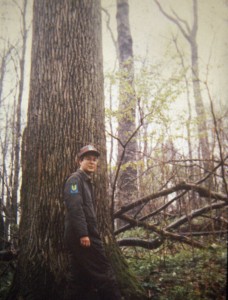 On August 20, 1981, the park district’s land management (land stewardship) program officially started with a board resolution. This moved the agency beyond just the acquisition of the land, but the restoration, maintenance and care for it. In 1985, the agency hired Dave Nolin to establish land stewardship plans for each of the district’s parks. Over the past 28 years, Dave built a team of conservation professionals to develop on these original plans and carry them out. Through their efforts, over 5500 acres of native habitat have been protected, which is directly related to the incredible rebound of wildlife populations, such as otter, wild turkey, beaver, bald eagle and black bear.
On August 20, 1981, the park district’s land management (land stewardship) program officially started with a board resolution. This moved the agency beyond just the acquisition of the land, but the restoration, maintenance and care for it. In 1985, the agency hired Dave Nolin to establish land stewardship plans for each of the district’s parks. Over the past 28 years, Dave built a team of conservation professionals to develop on these original plans and carry them out. Through their efforts, over 5500 acres of native habitat have been protected, which is directly related to the incredible rebound of wildlife populations, such as otter, wild turkey, beaver, bald eagle and black bear.
With Nolin as an advocate, the district adopted a policy to keep 90% of MetroParks lands in a natural state with the remaining 10% to be developed for picnic areas, roads, nature centers and parking lots, one of the most ambitious policies of its kind in the country.
In the mid 1990s, Dave Nolin took over the responsibilities for land acquisition for the district. Over the following 20 years he doubled the land the park district owned or leased – adding an additional 5,500 acres to those protected for future generations.
In 2012, Dave Nolin was awarded the 2012 Jack Hanna Resource Conservation Award by the Ohio Parks and Recreation Association.
Dave retired as Five Rivers MetroParks’ Conservation Director in 2015.
Gerald S. Office, Jr.
Gerald served as the fund-raising chairman for the Vote Green Finance Committee of the 1988 “Parks 2000″ Levy campaign, designed to promote and pass the levy. “Yes Parks” was adopted as the slogan of the campaign and the park district’s (MetroParks’) levy pledge was to continue providing clean, safe, well-managed parks with innovative programming and activities for all ages, and to pursue an aggressive land stewardship program. The $0.7 million, ten-year replacement levy, cancelled the then current $0.5 million levy.
Marvin Olinsky
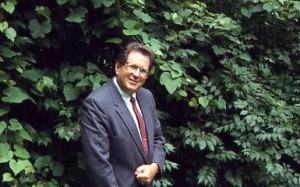 Marvin Olinsky was appointed as the third Director-Secretary effective December 1, 1986. Olinsky, a graduate of Delaware Valley College (B.S. in Horticulture) and Lehigh University (Masters in Education), had served as director of Cox Arboretum from July 1980 until his appointment.
Marvin Olinsky was appointed as the third Director-Secretary effective December 1, 1986. Olinsky, a graduate of Delaware Valley College (B.S. in Horticulture) and Lehigh University (Masters in Education), had served as director of Cox Arboretum from July 1980 until his appointment.
Under the direction of Marvin Olinsky (1987-2001), MetroParks had made inroads into new areas and established a foundation for its role in the next century through the “Parks 2000″ and “Parks 21″ plans. Emphasis was placed on greenways and river corridors that link natural resources, public areas and communities through linear parks and multi-use paths. Research pointed to the importance of these corridors not only for recreation but for their value to wildlife as pathways between potentially isolated natural areas. With the support of Montgomery County residents, MetroParks took a leadership role in the development and management of linear parks through partnerships with cities, townships and municipalities. In addition, emphasis was placed on
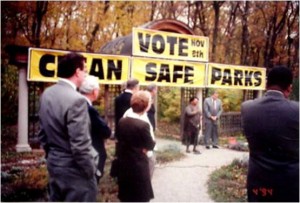 the importance of rivers and riverfront recreation and utilization, as well as on the need for increased service to urban areas to assure the entire population – urban, suburban and rural – was served. All this was accomplished while continuing to focus on the important issues of conservation, maintenance, improvements and security at MetroParks facilities assuring “clean, safe parks…today and tomorrow.”
the importance of rivers and riverfront recreation and utilization, as well as on the need for increased service to urban areas to assure the entire population – urban, suburban and rural – was served. All this was accomplished while continuing to focus on the important issues of conservation, maintenance, improvements and security at MetroParks facilities assuring “clean, safe parks…today and tomorrow.”
Olinsky was a force behind the downtown RiverScape project and transforming Island Park from a deteriorating park with a dodgy image into a popular family attraction. Under his direction, MetroParks grew to an 11,000-acre system with 23 facilities and an annual attendance of 5.6 million. Olinsky was also responsible for changing the system’s name from the more prosaic Park District of Dayton and Montgomery County to Five Rivers MetroParks.
Olinsky put increased emphasis on urban parks, educational programs and recreational facilities such as the network of bike trails. He expanded law enforcement presence in the parks to make them more family-friendly. He also help establish Adventure Central, an environmental learning center for urban youth at Wesleyan MetroPark through a partnership with 4-H Club.
Marvin was often characterized as a spark plug and ‘out of the box’ thinker. An example of his nontraditional approach came in 1996, when he bought some World War II-vintage amphibious military troop carriers nicknamed “ducks.” MetroParks sold the vehicles to a vendor which offered duck rides in the Great Miami River.
With successful passage of the levy and a blueprint for the future of MetroParks in place, Marvin Olinsky announced his retirement effective June 30, 2001.
William P. Patterson
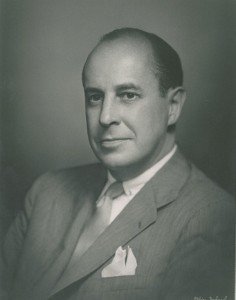 Patterson was the first member of the Board of Park Commissioners appointed for the park district in 1963, intended to determine policy, approve expenditures and employ a staff. He was president of Specialty Papers Company and a long-time community activist. He accepted the appointment because he shared the belief in the importance of open space.
Patterson was the first member of the Board of Park Commissioners appointed for the park district in 1963, intended to determine policy, approve expenditures and employ a staff. He was president of Specialty Papers Company and a long-time community activist. He accepted the appointment because he shared the belief in the importance of open space.
The Commissioners held their first meeting on June 18, 1963. Patterson was elected president. He ruefully remembered, “We knew nothing, had no money, no parks.”
In 1964, prior to the first levy, William Patterson persuaded Eugene Kettering to donate $250,000 to acquire land. This led to the acquisition of properties totaling 223 acres on April 1, 1965. This area was originally called Drylick Run and later became the north-central section of Carriage Hill MetroPark.
William P. Patterson served nearly 20 years on the Board of Park Commissioners, retiring in 1981.
Alan F. Pippenger
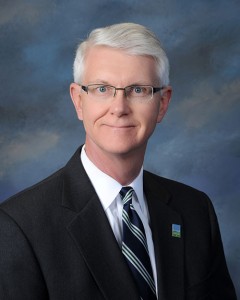 Alan F. Pippenger was appointed to the Board of Park Commissioners in 2004. Mr. Pippenger is a local businessman, supporter of open-space preservation and community leader. He retired from the Board of Park Commissioners in 2019.
Alan F. Pippenger was appointed to the Board of Park Commissioners in 2004. Mr. Pippenger is a local businessman, supporter of open-space preservation and community leader. He retired from the Board of Park Commissioners in 2019.
Doris Ponitz
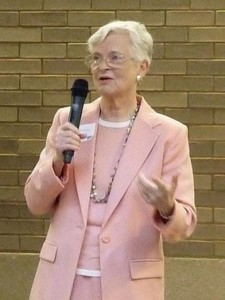 Doris Ponitz served as an honorary co-chair for the Vote Green Finance Committee of the 1988 “Parks 2000″ Levy campaign, designed to promote and pass the levy. “Yes Parks” was adopted as the slogan of the campaign and the park district’s (MetroParks’) levy pledge was to continue providing clean, safe, well-managed parks with innovative programming and activities for all ages, and to pursue an aggressive land stewardship program. The $0.7 million, ten-year replacement levy, cancelled the then current $0.5 million levy.
Doris Ponitz served as an honorary co-chair for the Vote Green Finance Committee of the 1988 “Parks 2000″ Levy campaign, designed to promote and pass the levy. “Yes Parks” was adopted as the slogan of the campaign and the park district’s (MetroParks’) levy pledge was to continue providing clean, safe, well-managed parks with innovative programming and activities for all ages, and to pursue an aggressive land stewardship program. The $0.7 million, ten-year replacement levy, cancelled the then current $0.5 million levy.
Carol Powell
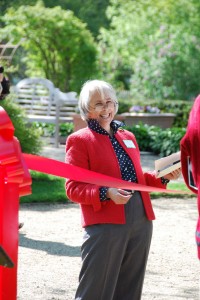 A devoted community volunteer and member of the Garden Club of Dayton, Carol served on the Wegerzyn Garden’s 35th anniversary committee in 1996. She went on to chair a capital campaign for the Aullwood Audubon Center in 2002 as well as the capital campaign for the Children’s discovery Garden at Wegerzn Gardens MetroPark. In recent years, Carol again chaired a landmark initiative at Wegerzn Gardens, with the Patrick Dougherty Stickwork Project in 2010-2012.
A devoted community volunteer and member of the Garden Club of Dayton, Carol served on the Wegerzyn Garden’s 35th anniversary committee in 1996. She went on to chair a capital campaign for the Aullwood Audubon Center in 2002 as well as the capital campaign for the Children’s discovery Garden at Wegerzn Gardens MetroPark. In recent years, Carol again chaired a landmark initiative at Wegerzn Gardens, with the Patrick Dougherty Stickwork Project in 2010-2012.
Marlay B. Price
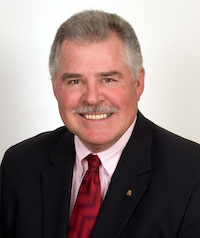 Marlay B. Price, served as campaign co-chairperson of the Vote Green Committee for the 1994 levy campaign. His father, Harry Price, served as honorary co-chairperson. The purpose of the levy was to provide additional funds that would be needed to implement a plan to protect and enhance the area’s major river corridors, while continuing to provide a high level of services at existing park sites. The “Vote Green” campaign centered on the vision of a “tapestry of greenways” in the Miami Valley utilizing river corridors and multi-use pathways to link parks, public facilities and communities.
Marlay B. Price, served as campaign co-chairperson of the Vote Green Committee for the 1994 levy campaign. His father, Harry Price, served as honorary co-chairperson. The purpose of the levy was to provide additional funds that would be needed to implement a plan to protect and enhance the area’s major river corridors, while continuing to provide a high level of services at existing park sites. The “Vote Green” campaign centered on the vision of a “tapestry of greenways” in the Miami Valley utilizing river corridors and multi-use pathways to link parks, public facilities and communities.
With community support and the additional funding provided by the 1994 levy, on January 1, 1995, through agreements with the City of Dayton and Miami Conservancy District, the Park District (MetroParks) added Island Park, Van Cleve Park, Deeds Point, Wesleyan Nature Center, Sunrise Park, Wegerzyn Horticultural Center and river corridor areas to its facilities to provide daily management, programming and security.
Felix Rimberg
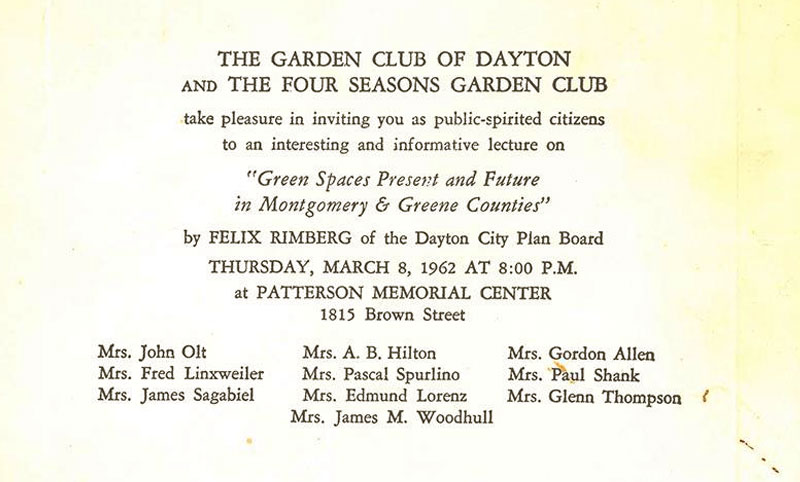 On March 8, 1962 Dayton, Ohio City Plan Board member Felix Rimberg, addressing an audience of members of Dayton garden clubs at the Patterson Homestead Memorial Center, called for an immediate and vigorous campaign to snatch from the blades of developers’ bulldozers as much of the Miami Valley’s remaining natural landscape as possible. “It’s now or never,” he warned.
On March 8, 1962 Dayton, Ohio City Plan Board member Felix Rimberg, addressing an audience of members of Dayton garden clubs at the Patterson Homestead Memorial Center, called for an immediate and vigorous campaign to snatch from the blades of developers’ bulldozers as much of the Miami Valley’s remaining natural landscape as possible. “It’s now or never,” he warned.
Rimberg had been involved in 1959 Open Space study and was chairman of a group that later became the Regional Planning Commission.
Miriam Rosenthal
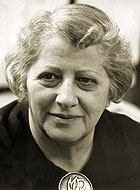 Miriam Rosenthal, a much-admired public relations person, rallied colleagues in business and industry to advise and assist in passing the first levy for the park district in 1964.
Miriam Rosenthal, a much-admired public relations person, rallied colleagues in business and industry to advise and assist in passing the first levy for the park district in 1964.
Harry S. Price
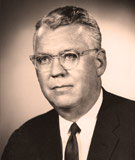 Price was the a member of the first Board of Park Commissioners appointed for the park district in 1963, intended to determine policy, approve expenditures and employ a staff. As an officer in Price Brothers Company and an avid outdoorsman, Price believed he owed it to the community to continue to take an active role in preserving open space in the Miami Valley. It had been Price’s foresight that had turned a gravel pit into Eastwood Lake Park for the City of Dayton. (Through an agreement with the City of Dayton, Eastwood is presently managed by Five Rivers MetroParks.)
Price was the a member of the first Board of Park Commissioners appointed for the park district in 1963, intended to determine policy, approve expenditures and employ a staff. As an officer in Price Brothers Company and an avid outdoorsman, Price believed he owed it to the community to continue to take an active role in preserving open space in the Miami Valley. It had been Price’s foresight that had turned a gravel pit into Eastwood Lake Park for the City of Dayton. (Through an agreement with the City of Dayton, Eastwood is presently managed by Five Rivers MetroParks.)
With this accomplished and direction coming into focus for the future of the Park District (MetroParks), Price retired from the Board of Park Commissioners on October 1, 1990, after 27 years of service.
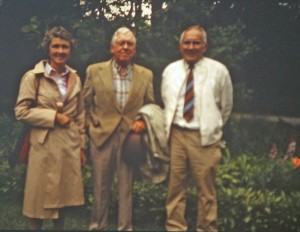 He also served as honorary co-chairperson of the Vote Green Committee for the 1994 levy campaign. His son, Marlay B. Price, served as campaign co-chairperson. The purpose of the levy was to provide additional funds that would be needed to implement a plan to protect and enhance the area’s major river corridors, while continuing to provide a high level of services at existing park sites. The “Vote Green” campaign centered on the vision of a “tapestry of greenways” in the Miami Valley utilizing river corridors and multi-use pathways to link parks, public facilities and communities.
He also served as honorary co-chairperson of the Vote Green Committee for the 1994 levy campaign. His son, Marlay B. Price, served as campaign co-chairperson. The purpose of the levy was to provide additional funds that would be needed to implement a plan to protect and enhance the area’s major river corridors, while continuing to provide a high level of services at existing park sites. The “Vote Green” campaign centered on the vision of a “tapestry of greenways” in the Miami Valley utilizing river corridors and multi-use pathways to link parks, public facilities and communities.
With community support and the additional funding provided by the 1994 levy, on January 1, 1995, through agreements with the City of Dayton and Miami Conservancy District, the Park District (MetroParks) added Island Park, Van Cleve Park, Deeds Point, Wesleyan Nature Center, Sunrise Park, Wegerzyn Horticultural Center and river corridor areas to its facilities to provide daily management, programming and security.
Jessica Salem
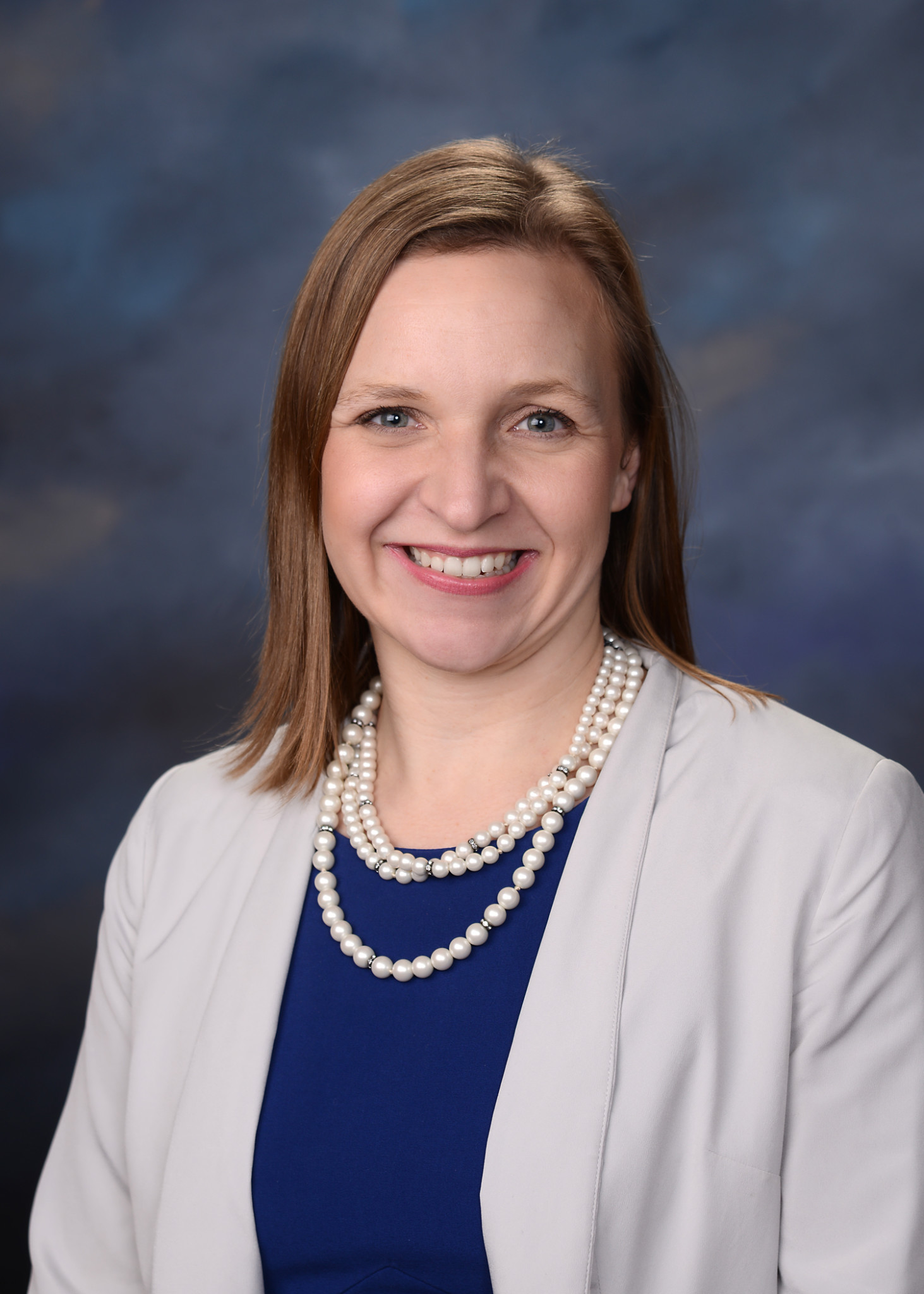
Jessica Salem joined Five Rivers MetroParks’ Board of Park Commissioners in 2018. As director of the office of community health and engagement programs at Dayton Children’s Hospital, Salem directs and coordinates regional children’s health efforts. She also is an adjunct faculty member at Wright State University and the University of Dayton. Salem has served as the president of the Junior League of Dayton and currently serves on multiple boards, such as Project READ and Leadership Dayton.
Donald P. Schmidt
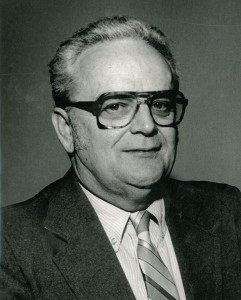 Donald P. Schmidt became director in August of 1976. Schmidt was a fitting choice for the job. He was a graduate of Pennsylvania State University in Park and Recreation Administration with graduate work in the field. He had served in several positions in the State of Ohio, including with the Ohio Department of Natural Resources.
Donald P. Schmidt became director in August of 1976. Schmidt was a fitting choice for the job. He was a graduate of Pennsylvania State University in Park and Recreation Administration with graduate work in the field. He had served in several positions in the State of Ohio, including with the Ohio Department of Natural Resources.
He embarked on a fundraising campaign in the late 70′s, after inflation began to pressure the district’s finances. He set a goal of raising $500,000 a year beyond the levy income. Most of this would come from the Federal Land and Water Conservation Fund administered by the state. The rest would have to be provided by donations, income from trust funds and the local government fund.
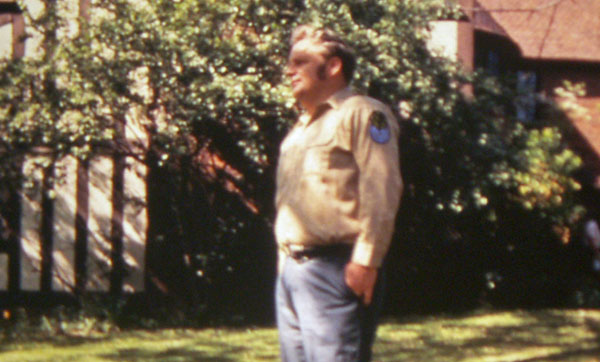 On January 31, 1987, Donald P. Schmidt retired as director, closing an era of the park district’s (MetroParks’) history.
On January 31, 1987, Donald P. Schmidt retired as director, closing an era of the park district’s (MetroParks’) history.
“There is some benefit to a shortfall in funding; conservative financing prevents overdevelopment of the parks.” – Donald P. Schmidt
Ralph Scott
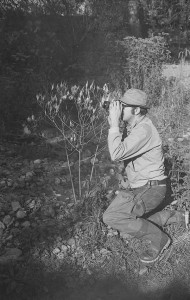 Ralph Scott, a naturalist with the Dayton Museum of Natural History, joined the park district (MetroParks) on a part-time basis to lead walks in 1965. He along with Huston and Lawwill led walks on every weekend for two years. Scott became the park district’s (MetroParks) chief naturalist in 1967.
Ralph Scott, a naturalist with the Dayton Museum of Natural History, joined the park district (MetroParks) on a part-time basis to lead walks in 1965. He along with Huston and Lawwill led walks on every weekend for two years. Scott became the park district’s (MetroParks) chief naturalist in 1967.
Charles "Charlie" Shoemaker
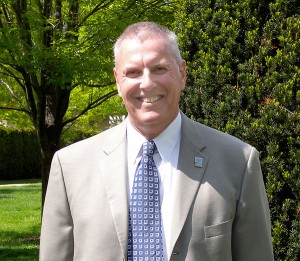 In July, 2001, The Board of Park Commissioners appointed Charles Shoemaker, who had been with MetroParks since June, 1977 (most recently as chief operations director), as MetroParks new executive director. During his years with MetroParks, Shoemaker had developed an in-depth knowledge of MetroParks, especially in the areas of finance, operations and land protection, and was well prepared for his new role. Protection of natural resources and land stewardship continued to be a priority. By February 2003, MetroParks was responsible for 11,787 acres and offered 24 facilities for public enjoyment.
In July, 2001, The Board of Park Commissioners appointed Charles Shoemaker, who had been with MetroParks since June, 1977 (most recently as chief operations director), as MetroParks new executive director. During his years with MetroParks, Shoemaker had developed an in-depth knowledge of MetroParks, especially in the areas of finance, operations and land protection, and was well prepared for his new role. Protection of natural resources and land stewardship continued to be a priority. By February 2003, MetroParks was responsible for 11,787 acres and offered 24 facilities for public enjoyment.
Shoemaker retired in 2011, after the successful passage of the 2009 levy campaign.
Katherine Siebenthaler
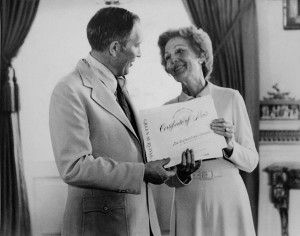 Katherine was one of the founders of the Garden Club of Dayton in 1922, with Marie Aull and Katherine Houk Talbott. These three women challenged the organization to be conservationists, and reach beyond their gardens and ultimately touch the community.
Katherine was one of the founders of the Garden Club of Dayton in 1922, with Marie Aull and Katherine Houk Talbott. These three women challenged the organization to be conservationists, and reach beyond their gardens and ultimately touch the community.
Robert K. Siebenthaler
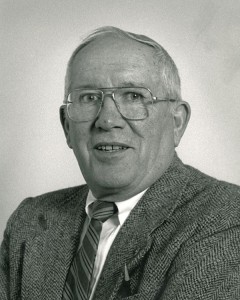 Robert K. Siebenthaler was appointed to the board of Park Commissioners in 1984. Siebenthaler was especially interested in managing park district (MetroParks) facilities so as to provide a variety of habitats. He pointed out, “Left alone, these areas would return to forest. That’s very limiting. Many species of wildlife can’t exist in the woods. They exist in other types of ecosystems – like prairies, water, meadows. We must try to maintain a diversification which will better preserve the wonders of nature.”
Robert K. Siebenthaler was appointed to the board of Park Commissioners in 1984. Siebenthaler was especially interested in managing park district (MetroParks) facilities so as to provide a variety of habitats. He pointed out, “Left alone, these areas would return to forest. That’s very limiting. Many species of wildlife can’t exist in the woods. They exist in other types of ecosystems – like prairies, water, meadows. We must try to maintain a diversification which will better preserve the wonders of nature.”
Today, to honor Bob and his wife Joan’s contibution to the community over the year, we annually present the Bob and Joan Siebenthaler Bridge to the Community Award to a member of the community that best exemplifies the MetroParks spirit by enthusiastically reaching out into the community to form new partnerships, create and nurture relationships or build heightened awareness of and support for MetroParks.
Katherine Houk Talbott
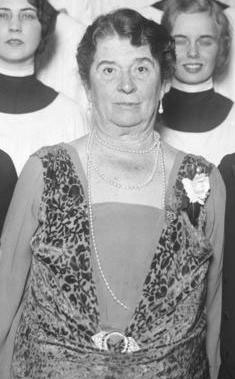 Katherine was one of the founders of the Garden Club of Dayton in 1922, with Marie Aull and Katherine Siebenthaler. These three women challenged the organization to be conservationists, and reach beyond their gardens and ultimately touch the community.
Katherine was one of the founders of the Garden Club of Dayton in 1922, with Marie Aull and Katherine Siebenthaler. These three women challenged the organization to be conservationists, and reach beyond their gardens and ultimately touch the community.
Glenn Thompson
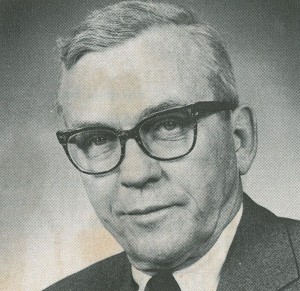 Glenn was the editor of the Dayton Journal-Herald in the late 1950′s. Thompson, a Tennessee native who had come to the Journal-Herald by way of the Cincinnati Enquirer, was a lifelong hunter and outdoorsman. He appreciated the importance of green space and had enjoyed the Hamilton County Park District. He wanted a similar facility in Montgomery County.
Glenn was the editor of the Dayton Journal-Herald in the late 1950′s. Thompson, a Tennessee native who had come to the Journal-Herald by way of the Cincinnati Enquirer, was a lifelong hunter and outdoorsman. He appreciated the importance of green space and had enjoyed the Hamilton County Park District. He wanted a similar facility in Montgomery County.
Thompson became an ardent advocate for preservation of the Miami Valley’s open land, as a public speaker as well as from the bully pulpit of his morning newspaper’s editorial page. He campaigned tirelessly and successfully to save the wild, scenic Little Miami River valley from development, securing its designation as a National Scenic River.
Following a warning from Felix Rimberg presentation in 1962, Thompson took the podium to speak to members of the Garden Club of Dayton and the Four Seasons Garden Club on the subject of disappearing green space. Pleading the urgency of the cause, he concluded with a challenge: “Of course, I’m wasting my time talking to you about open space. You’re interested only in your children and your gardens.”
His audience accepted the challenge – as Thompson probably knew they would — and asked him what they could do. Make your voices heard – all of you, he urged. Within days the Save Open Space Committee (SOS) was formed, Thompson was elected President and the green space movement was underway. Building on substantial accomplishments of the past, notably the creation of the Miami Conservancy District and its river valley flood control reserves after the devastating 1913 flood, the movement gained momentum thanks to the persuasive voices of a handful of green space visionaries.
Thompson and Charles S. Bridge, a Dayton attorney and community activist, next persuaded seventeen municipalities and townships representing 83% of the population of Montgomery County to join together and petition Probate Court Judge Neal F. Zimmers to approve formation of the Montgomery County Park District. The judge granted approval in April, 1963. Thompson recruited the Park District’s first director, J. Richard Lawwill, then chaired the successful tax levy campaign that provided the Park District with the funds needed to begin its green space acquisition and preservation program.
“Glenn Thompson had the unique faculty of getting things going by getting a group together and agreeing on an idea. Glenn would then get somebody else to take over the group and go on to another idea. When he wanted something you really knew it.” – Harry S. Price, Jr.
Art Van Atta
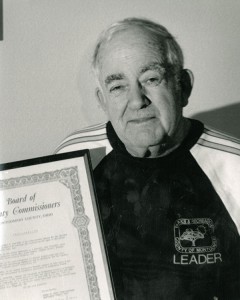 Van Atta, an advocate of outdoor sports such as hunting, fishing, canoeing, hiking and camping, devoted much of his life to sharing his love of the outdoors with children.
Van Atta, an advocate of outdoor sports such as hunting, fishing, canoeing, hiking and camping, devoted much of his life to sharing his love of the outdoors with children.
He founded Camp Thunderbird at Englewood MetroPark for the park district and served as director from 1967 until 1988. The five-day program included an overnight camp-out and featured instruction in fishing, hiking, canoeing, rowing, archery, horseback riding, crafts, Indian lore, survival skills and map and compass reading. The camp moved to Vandalia’s Art Van Atta Park in 1993.
Benjamin Wegerzyn
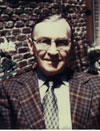 Benjamin Wegerzyn was an avid horticulturalist with a generous spirit. In 1963′s he made a donation of $358,000 to establish a horticultural center in Dayton. “I felt there should be some kind of space in or near the middle of town for the public’s enjoyment,” Wegerzyn said. The center opened in 1973. The concept originated in 1960, when the city, the Dayton Council of Garden Clubs and the Garden Club Federation of Dayton saw a need for a central display area for flower shows, educational programs, gardening workshops and conserving natural resources.
Benjamin Wegerzyn was an avid horticulturalist with a generous spirit. In 1963′s he made a donation of $358,000 to establish a horticultural center in Dayton. “I felt there should be some kind of space in or near the middle of town for the public’s enjoyment,” Wegerzyn said. The center opened in 1973. The concept originated in 1960, when the city, the Dayton Council of Garden Clubs and the Garden Club Federation of Dayton saw a need for a central display area for flower shows, educational programs, gardening workshops and conserving natural resources.
In 1993, the Wegerzyn Horticultural Center and the 22 acres around it became part of the park district. Mr. Wegerzyn remained involved with the center up to his death in 1997.
Leon Wilder
Leon Wilder was part of the 1965 task force for buying land. He brokered the land for a greatly reduced commission of 2%.
Jean Woodhull
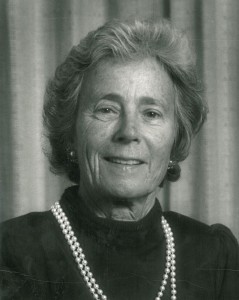 Jean Woodhull was in the audience at that March, 1962 meeting sponsored by the Garden Club of Dayton and the Four Seasons Garden Club. She listened to Felix Rimberg’s call for the preservation of green space and pored over his charts and maps that showed how the Dayton metropolitan area was predicted to develop over the next eighteen years. She heard Glenn Thompson’s challenge to action.
Jean Woodhull was in the audience at that March, 1962 meeting sponsored by the Garden Club of Dayton and the Four Seasons Garden Club. She listened to Felix Rimberg’s call for the preservation of green space and pored over his charts and maps that showed how the Dayton metropolitan area was predicted to develop over the next eighteen years. She heard Glenn Thompson’s challenge to action.
After hearing his presentation, she took the challenge and asked what the Garden Club could do to help. She became instrumental in organizing the Save Open Space Committee in the early 1960′s that ultimately became the park district, and in 1962 with Jean Mahoney convinced James Cox, Jr. to donate his farm south of town for what is now Cox Arboretum. She founded the Arb with the help of Marie Aull, Jean Mahoney and Ruth Burke and served as the Cox Foundation’s board president from 1979-84.
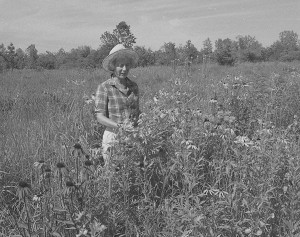
After years of community work, Jean V. Woodhull was appointed by Judge George J. Gounaris to serve as the third member of the park commissioner board in 1989. Woodhull had long been dedicated to the park district (MetroParks) and a “green” community. Her involvement dated back to the early efforts to create a park district to serve the Greater Dayton area and she enthusiastically embraced this opportunity to serve on the board.
She also served on the advisory committee of the Friends of Hills & Dales Park in the 1990′s, which sponsored work days and fundraising to maintain the historic park.
After serving ten years as a MetroParks commissioner, Jean Woodhull resigned from the Board of Park Commissioners on November 20, 1998.
Neal F. Zimmers
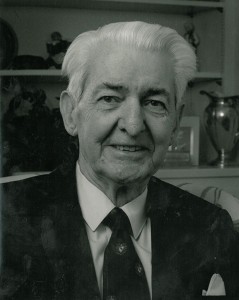 Probate Court Judge Neal F. Zimmers presided over the court and hearing for the petition of park district in 1963. Overwhelming support made it easy for Zimmers to approve the formation of the park district, which officially began on April 8, 1963.
Probate Court Judge Neal F. Zimmers presided over the court and hearing for the petition of park district in 1963. Overwhelming support made it easy for Zimmers to approve the formation of the park district, which officially began on April 8, 1963.
After creating the park district, Judge Zimmers was required to appoint three residents of the county to serve as the Board of Park Commissioners to determine policy, approve expenditures and employ a staff. He named William P. Patterson, Charles S. Bridge, and Harry S. Price, Jr.
Frank & Nancy Zorniger
In 1978, Frank Zorniger became an Cox Arboretum Foundation trustee and served as Membership Officer. His wife, Nancy, served as Arboretum Associate Board member.
The Zornigers were especially interested in supporting the Arboretum’s educational programs. In 1985, they provided a gift to start a Youth Education and Participation Garden program which began by planting of ten thousand spring bulbs at the arboretum entrance. “The bulbs,” Zorniger told the Foundation Board at their April 1985 organization meeting, “will be planted by schoolchildren in the fall; they will return in the spring and see the beauty they have created.” It was hoped that some of these youngsters would take that awareness home with them, spreading beauty throughout the communities where they lived.
When the Zornigers were approached to financially support the program the next fall, they agreed to not only for the coming year, but indefinitely. Their generosity peaked in 1999, when the Zornigers made a $2 million promise as part of a capital campaign. Their gift was acknowledged by bestowing their name on the new building complex designed to welcome visitors: the Zorniger Education Campus.


